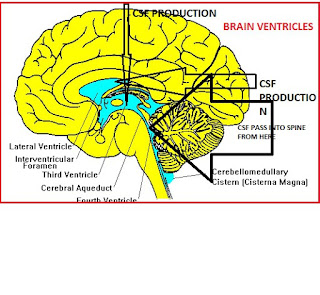SAFER WAY TO DELIVER DRUG INTO CNS
The barrier is made out of thick endothelial cells that surround the microcapillaries supplied to the brain. These endothelial lining of the microcapillaries are not only protecting the brain system from harmful materials enter into it and also maintaining and regulating reliable nerve signals into the microenvironment of the CNS.
There are three barriers between the blood and the CNS namely the BBB, which is the barrier between the blood and the brain interstitial fluid, the choroid plexus epithelium between the blood and ventricular CSF, and the arachnoid epithelium between the blood and the subarachnoid CSF. Of these BBB exerts the strongest control over the immediate microenvironment of the brain cells.
In simple terms the BBB is composed of 1)The endothelium of the brain capillaries;2)Extracellular base membrane of the brain;3)Adjoining pericytes:4)Astrocytes; and 5)microglial cells.
Hence in general the brain is well protected by BBB.
But in another sense this strongest formidable barrier poses a great hindrance to delivering a needful medication such as medications to treat brain tumors, Parkinson's Disease, Alzheimer's Disease to the brain. Any trial to deliver medicine through the CSF would be flushed out and drained back into the blood.
Hence on an experimental basis the scientists used long wave low-frequency UV pulse radiations to push the medicine into the brain system successfully. But this causes nervous damages and a permanent hole at the BBB. Moreover a long wave low-frequency UV sound pulse radiation needs prolonged radio exposure to the brain tissue which causes many side effects because of unnecessary large protein molecules such as albumin and microbes enters into the brain along with the drug.
A team of scientists at the Imperial College of London, lead by Dr.James Choi, have studied about the use of Short wave UV pulses in mice models and the result is published in the Journal Radiology
They found that the use of Short wave UV sound pulses is having a huge beneficiary efficacious effects over the long wave low-frequency UV pulses.
Short wave UV pulses need less time and do not give chances to the entry of extra materials other than the drugs. The drug is injected as microbubbles into the blood and when it reaches at the site of action the BBB, the short wave UV pulses causes the bubble to enlarge and pushes and open the BBB little by little and entered into it and make the BBB close immediately within 10 minutes and thereby prevent the entry of unwanted molecules. Hence there is minimum tissue damage.
These are major advantages of short wave UV sound pulses over the use of long-wave low-frequency UV sound pulses that need longer exposure.
Still the trial is on an experimental basis now it is critical to say when the system will be conducted on human models.
Conclusion:-
Since there are many modern drugs has been synthesized to cure Alzheimer's Disease, and brain cancers but still they could not be effectively used because of the forbidding construction of the BBB
NB:-
ABBREVIATIONS:-
CNS----Central Nervous System
BBB----Blood-Brain Barrier
UV ---- Ultra Violet
CSF----Cerebro Spinal Fluid
There are three barriers between the blood and the CNS namely the BBB, which is the barrier between the blood and the brain interstitial fluid, the choroid plexus epithelium between the blood and ventricular CSF, and the arachnoid epithelium between the blood and the subarachnoid CSF. Of these BBB exerts the strongest control over the immediate microenvironment of the brain cells.
In simple terms the BBB is composed of 1)The endothelium of the brain capillaries;2)Extracellular base membrane of the brain;3)Adjoining pericytes:4)Astrocytes; and 5)microglial cells.
Hence in general the brain is well protected by BBB.
But in another sense this strongest formidable barrier poses a great hindrance to delivering a needful medication such as medications to treat brain tumors, Parkinson's Disease, Alzheimer's Disease to the brain. Any trial to deliver medicine through the CSF would be flushed out and drained back into the blood.
Hence on an experimental basis the scientists used long wave low-frequency UV pulse radiations to push the medicine into the brain system successfully. But this causes nervous damages and a permanent hole at the BBB. Moreover a long wave low-frequency UV sound pulse radiation needs prolonged radio exposure to the brain tissue which causes many side effects because of unnecessary large protein molecules such as albumin and microbes enters into the brain along with the drug.
A team of scientists at the Imperial College of London, lead by Dr.James Choi, have studied about the use of Short wave UV pulses in mice models and the result is published in the Journal Radiology
They found that the use of Short wave UV sound pulses is having a huge beneficiary efficacious effects over the long wave low-frequency UV pulses.
Short wave UV pulses need less time and do not give chances to the entry of extra materials other than the drugs. The drug is injected as microbubbles into the blood and when it reaches at the site of action the BBB, the short wave UV pulses causes the bubble to enlarge and pushes and open the BBB little by little and entered into it and make the BBB close immediately within 10 minutes and thereby prevent the entry of unwanted molecules. Hence there is minimum tissue damage.
These are major advantages of short wave UV sound pulses over the use of long-wave low-frequency UV sound pulses that need longer exposure.
Still the trial is on an experimental basis now it is critical to say when the system will be conducted on human models.
Conclusion:-
Since there are many modern drugs has been synthesized to cure Alzheimer's Disease, and brain cancers but still they could not be effectively used because of the forbidding construction of the BBB
NB:-
ABBREVIATIONS:-
CNS----Central Nervous System
BBB----Blood-Brain Barrier
UV ---- Ultra Violet
CSF----Cerebro Spinal Fluid





